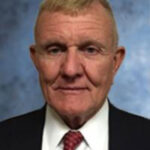
World-Class Team of Physicists And Engineers
Expert in high-temperature superconductors, hypersonics, and high-energy electromotive technology.
Dr. Harry Fair
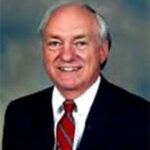
Executive Director, Institute for Strategic and Innovative Technologies President, Oaks Plasma, LLC.
E-mail Address: fair.isit@gmail.com
Dr. Harry D. Fair is the Founding President of Fair Oaks Plasma, Inc. and Oaks Plasma, and the founding Director of the Institute for Strategic and Innovative Technologies. Dr. Fair’s early research and career were with the U.S. Army, the Defense Advanced Research Projects Agency (DARPA), and the Strategic Defense Initiative Organization (SDIO). In 1990, he founded and was the Director of the Institute for Advanced Technology.
The IAT was the Army’s first University Affiliated Research Center, located at The University of Texas at Austin. The IAT focused on research in hypervelocity physics and electrodynamics and became one of the world leaders in these technologies.
An experienced laboratory director, program manager, and physicist. Dr. Fair created, directed, and managed complex multidisciplinary technical efforts of national importance. Among these were the Joint DARPA/Army/Marine Corps Program on Armor/Anti-Armor, the National Program on Electromagnetic Propulsion, the Advanced Kinetic Energy Technology Program for the Strategic Defense Initiative, the Army Propulsion Program, and the Army Program on Solid-State Physics and Chemistry of Explosives and Reactive Materials.
Dr. Fair holds a Ph.D. in solid-state physics and an M.S. in chemical physics from the University of Delaware; he received a B.S. in physics from the Indiana University of Pennsylvania. He was a visiting professor at the University of Paris, at the Royal Institution of Great Britain, and The University of Texas at Austin. He has co-authored over 200 technical publications, including two books on Energetic Materials, and is the senior editor of the Seventeen IEEE Proceedings of the International Symposium on Electromagnetic Launch Technology. These Proceedings represent the science and technology base for Electromagnetic Launch.
Dr. Graham V. Candler
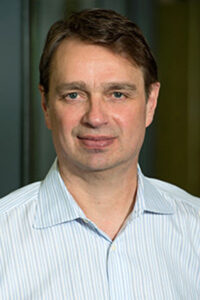
Professor Candler uses computational fluid dynamics to study high-temperature reacting flows and hypersonic flows and is particularly interested in how the relaxation of internal energy modes and finite-rate chemical reactions interact with fluid motion. Applications of this work include the analysis of planetary entry spacecraft heat shields, hypersonic boundary layer transition, and the effects of chemical reactions on aerodynamics. Dr. Candler works closely with experimentalists to validate high-enthalpy flow models by careful comparison to shock tunnel data. Recently, Candler’s research group has been working to extend computational methods to complex geometries for application to future scramjet-powered hypersonic aircraft. These tools were used to design an inward-turning inlet for an upcoming sounding rocket flight experiment of a Mach 10 vehicle.
McKnight Presidential Chair, Distinguished McKnight University Professor, Russell J. Penrose Professor, Associate Department Head, Aerospace Engineering & Mechanics
Ph.D., Aeronautics and Astronautics, Stanford University, 1988
M.S., Aeronautics and Astronautics, Stanford University, 1985
B.Eng., Mechanical Engineering, McGill University, 1984
Professor, Associate Department Head, Aerospace Engineering & Mechanics, University of Minnesota, 2014 – Present
Honors and Awards
2020: Elected to the National Academy of Engineering
2018: AIAA Dryden Lectureship in Research
2012: Russell J. Penrose Professor
2012: AIAA Fluid Dynamics Award
2009: McKnight Presidential Professor, University of Minnesota
2009: National Security Science and Engineering Fellowship
2008: Fellow of the American Institute of Aeronautics and Astronautics (AIAA)
2007: AIAA Thermophysics Award
2006: AIAA Outstanding Paper Award in Aerodynamic Measurement and Ground Testing
2004: Distinguished McKnight University Professor, University of Minnesota
2002: George Taylor Distinguished Research Award, University of Minnesota
1990, 2001, & 2015: AIAA Award for Best Technical Paper in Thermophysics
1988: Ballhaus Prize for Best Ph.D. Thesis in Stanford Aeronautics and Astronautics
Fellow of the University of Minnesota Supercomputing Institute
Dr. Jerald Parker
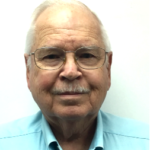
Dr. Parker has nearly four decades of experience in high current, high energy electromagnetic technology. At Los Alamos National Laboratory he was project leader for the development of high current magnetic flux compression generators for fusion research. Other work at Los Alamos included construction and testing of the 25 MA Atlas capacitor bank facility and research on electromagnetic launchers.
Following retirement from Los Alamos National Laboratory, his work on electromagnetic launchers continued at the Institute for Advanced Technology at the University of Texas in Austin. He was responsible for building the IAT electric launcher facility and performing research on issues affecting railgun performance. In 1994 he was awarded the Peter Mark Medal for outstanding contribution to electromagnetic launch technology. Since leaving the IAT, Dr Parker has been employed by Leidos, Inc to provide research and development support to the Air Force Research Laboratory at Kirtland AFB. In that capacity he has been instrumental in the design, fabrication and testing of a variety of magnetic flux compression generators with output currents as high as 10 MA and energies of greater than 1 MJ. Other projects at the Air Force Research Laboratory include the design and construction of an eight-stage induction launcher and the development of solid-state high voltage switches.
Prior to his work on electromagnetic technology, Dr. Parker performed R&D on a variety of gas discharge lasers at Bell Labs and the Hughes Research Laboratory. He earned a BS degree in 1960 and a PhD degree in 1964, both from the California Institute of Technology.
DR. HUUB WEIJERS
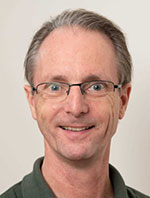 Dr. Huub Weijers earned his MS and PhD in Applied Physics at the University of Twente, Enschede, in the Netherlands.
Dr. Huub Weijers earned his MS and PhD in Applied Physics at the University of Twente, Enschede, in the Netherlands.
He was the Senior Principal Engineer at Robinson Institute, Victoria University of Wellington. Dr. Weijers had 27 years of experience with development, manufacturing and testing of superconducting devices. He was a renowned published researcher in high-temperature superconducting and quench analysis.
Prior to his work at the Robinson Institute, Dr. Weijers was a project leader at the United States National High Magnetic Field laboratory in Tallahassee Florida, where he led a team to produce the world’s highest field strength super conducting magnet with a unique quench protecting system, after which he rose to Associate Scholar – Scientist, and then to the research faculty of the NHMFL.
In Memoriam:
Dr. Huub Weijers, MS and PhD in Applied Physics, passed away early in November 2024. As the Senior Principal Engineer at Robinson Institute, his years of experience, including those at United States National High Magnetic Field laboratory, in developing and testing superconducting devices and analyzing quench events were pivotal in the design of our first sub scale launcher. He will be greatly missed both personally and professionally. In honor of Huub and his design, we have designated our first HTS launcher as The Weijers Sub Scale Demonstrator.
Dr. Nick Long
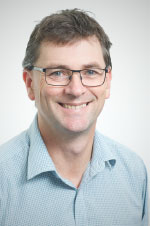
Dr. Nick Long is the Director of the Robinson Research Institute, Victoria, University of Wellington, New Zealand. He obtained a MSc in Physics at Victoria University and completed a PhD in Physics at the University of Southern California.
From 1994 -2013 he worked at Industrial Research Ltd., the Crown Research Institute of New Zealand. His primary research has been in high temperature superconductivity. He was a founder of the program at Industrial Research Ltd. to develop HTS Roebel cables. His other high temperature superconductor work has focused on enhancing wire performance and understanding the phenomenology of critical currents. More recent projects involve the application of superconductivity to satellite and space technology. He is also involved in working with industry partners in the application of magnetic sensors.
Mehmet Erengil
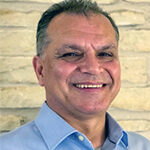
Mehmet E. Erengil, Ph.D.– Innovator. Inventor. Entrepreneur.
Dr. Erengil has over 26 years of experience in the research, development, and demonstration of advanced technologies, prototype systems, and transformative capabilities. He has unique expertise in offensive and defensive weapon systems ranging from subsonic mortars to hypersonic weapons and advanced electromagnetic launch (EML) systems for earth-to-space access. He is also the lead inventor of a new breed of hybrid-electric vertical take-off and landing (eVTOL) aircraft and a developer of dual-purpose advanced air mobility (AAM) solutions for both military missions and commercial applications.
Dr. Erengil is skilled at establishing, motivating, and leading large interdisciplinary teams and developing disruptive solutions to achieve strategic objectives. Dr. Erengil earned his M.S. and Ph.D. degrees in Aerospace Engineering and Engineering Mechanics from The University of Texas at Austin and his B.S. degree in Mechanical Engineering from Case Western Reserve University.
Michael Gorman

Michael Gorman is a founding Managing Director of Split Rock Partners and focuses on investments in software and internet services companies. Split Rock manages $575 million of capital.
Prior to founding Split Rock Partners, Michael was Managing General Partner of St. Paul Venture Capital (SPVC), focused on software and internet services investments. Across six funds, SPVC managed $1.6 billion in capital.
Michael holds a bachelor’s degree in economics from Duke University, as well as MBA and JD degrees from Harvard University. He began his venture capital career with the Harvard Management Company. Earlier in his career, he was a management consultant with Bain & Company, where he assisted clients in the development and execution of corporate strategies.
Steven E. Helland

Shareholder, Fredrikson & Byron PA
Steve chairs a multi-disciplinary group of lawyers, as the laws and marketplace dynamics impacting his clients cut across traditional lines. His areas of focus and experience include copyright, licensing, contracts, Software as a Service (SaaS), cloud agreements, start-ups and entity formation, advertising, health IT, marketing, social media, privacy, security and breach issues, big data, and machine learning/artificial intelligence (A.I.).
EDUCATION
- University of Michigan Law School, J.D., 1996,cum laude
- Vassar College, A.B., 1991,cum laude
- University of Edinburgh, Scotland, 1998-1999
BAR ADMISSIONS
- Minnesota, 1996
- S. District Court for the District of Minnesota, 1996
HONORS
- Minnesota State Bar Association, North Star Lawyer, 2015
- Minneapolis/St. Paul Business Journal, “40 Under Forty”
- Minnesota Law & Politics, Rising Star
David G. Dillon
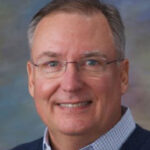
Mr. Dillon graduated from the University of Minnesota’s Carlson School of Business in 1979 and joined the Meyers Printing Companies, Inc. A successful and entrepreneurial career would follow. David was co-founder, chairman, and chief technology officer for PlanetPrint.com. Planet Print created a revolutionary change in the remote production of print communications by creating software to leverage the internet and desktop publishing tools to enable remote production. They attracted private equity capital and an investment-banking partner, Planet Print grew and was sold to Standard Register in 2002.
In 2004 David founded Verify Brand based on a series of his patented anti-counterfeit inventions using random numbers for distribution on products and then verification over the internet. Verify pioneered the technology which revolutionized product authentication and subsequently became the gold standard for anti-counterfeit protection worldwide. Verify developed a best-in-class platform based on an event source database architecture and web services using the Microsoft Azure Cloud. The company was sold to Optel Group in 2017.
In 2016 David was issued a patent for an approach to electromagnetic launch, and so began a multi-year effort to understand the physics and engineering that could dramatically reduce the cost of launching materials into space, this would finally lead to the formation of Electromagnetic Launch in the fall of 2020.
David is a seaplane pilot, a student of politics, history, and a vibraphone player. David can maybe best be explained as a man who, for decades, only maintained two magazine subscriptions, The Economist and Popular Science. He was a candidate for the United States Congress in 2008, running as the Independence party-endorsed candidate in Minnesota’s 3rd district.
advisors
David Wetz, Ph.D.
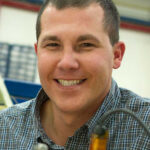
RESEARCH
Electrochemical Energy Storage
Emphasis on studying performance and aging of lithium-ion batteries, electric double-layer capacitors, lead-acid batteries, and fuel cells at very high charge and discharge rates. Energy storage of materials up to the 1200 V battery level.
Power Systems
Emphasis on studying power system design and control when energy storage is utilized as a buffer to installed transient loads. Small and large-scale power system testbeds already installed on the university campus.
Pulsed Power
High voltage & high current capacitive power supplies, pulsed dielectric breakdown of fluids, solid & plasma armature electromagnetic railguns.
Power Electronics
DC/DC converters, AC/DC rectifiers, component level study, thermal characterization.
ACTIVE SPONSORING AGENCIES
U.S. Office of Naval Research supporting NSWC-Philadelphia, NSWC Dahlgren, and Naval Research Labs
U.S. Air Force Research Laboratory Kirtland
Small businesses in support of ongoing SBIR/STTR efforts
Loren Erik Snyder
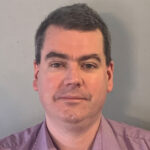 Erik Snyder earned his BS and MS in Mechanical Engineering at Colorado State University and Texas A&M University, respectively. He earned his MBA from the University of Wisconsin-Madison.
Erik Snyder earned his BS and MS in Mechanical Engineering at Colorado State University and Texas A&M University, respectively. He earned his MBA from the University of Wisconsin-Madison.
Mr. Snyder has worked in a variety of disciplines and industries as part of his career. He started out in heavy manufacturing at Mueller Streamline Co. in Wynne, Arkansas.
Mr. Snyder worked at the IAT on projects related to railguns (120mm Cantilevered Railgun Mortar) and on precision guided munitions (MGK). He continued work in the field of precision guided munitions as part of Counter Rocket, Artillery, and Mortar (C-RAM) system design with Accurate Munition Systems of Austin, TX.
In subsequent years Mr. Snyder has worked in the biomedical field on a prototype surgical guidance system (at Cleveland Clinic/Lerner Research Institute), in high power density axial flux induction motors and generators (at Maxxwell Motors), and in nutraceutical processing (at Metagreen). Presently Mr. Snyder is a consulting engineer engaged primarily in process design, custom automation, and investment technical due diligence.
Dennis W Beal
Retired Marine Colonel Dennis W. Beal served as executive director for the U.S. Navy’s Office of Science and Technology, which was responsible for developing technology for both the Navy and Marine Corps. Col Beal was the Program Manager for the DoD’s electromagnetic energy and weapons research efforts along with being the DoD ED for Advanced Technology Programs and Concepts.
Subsequently, he worked as a senior partner for University Venture Capital Growth, where he managed a research team responsible for generating $120 million in revenue for various universities. He also served as executive director for Texas A&M University Systems Strategic Commercial Alliances & Programs office, which worked with more than 400 commercial and business partners within the $3.8 billion TAMU system.
Beal is a graduate of Sam Houston State University, the Marine Corps Command and Staff College and has a MS in Procurement and Acquisition from the Defense Acquisition University. He is a Level III DAU / DAWAI / PMP certified PM.


